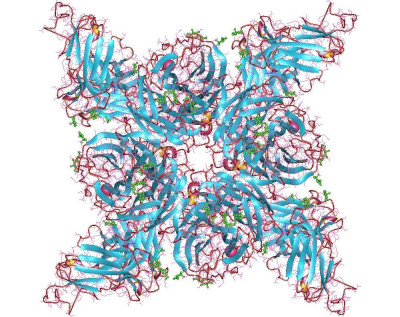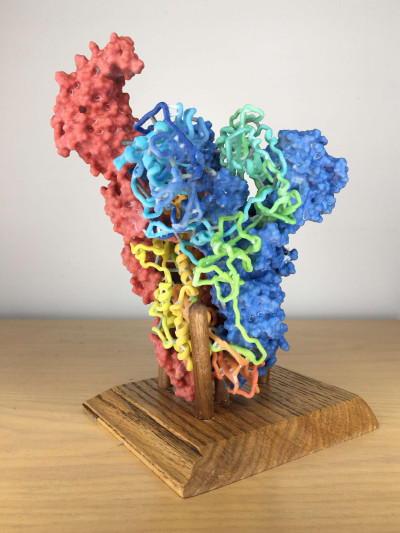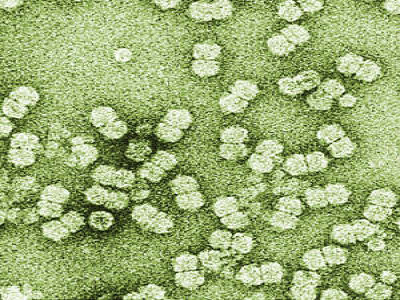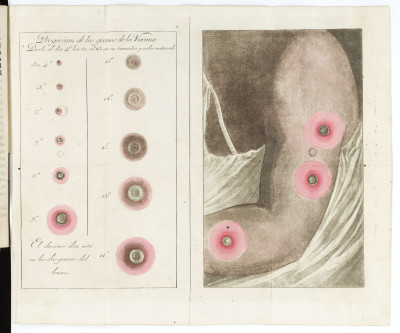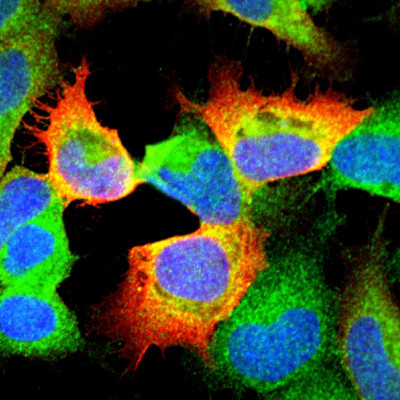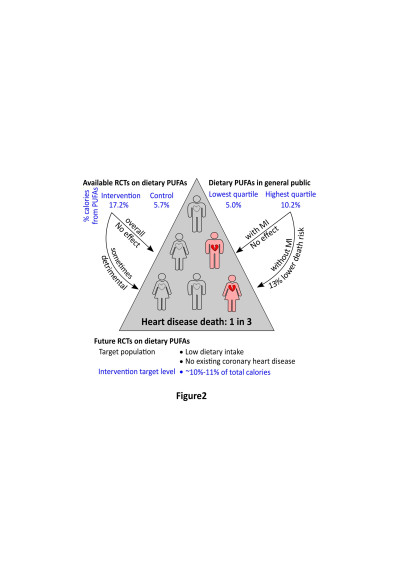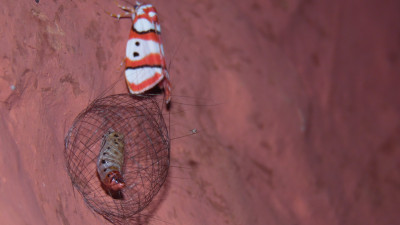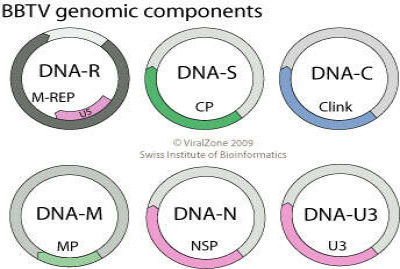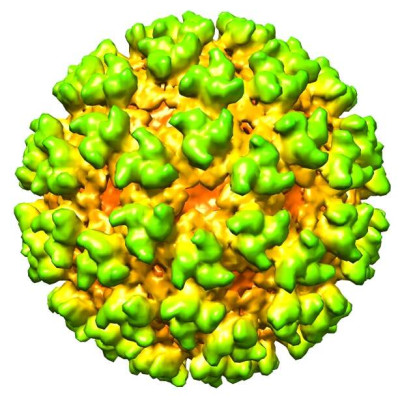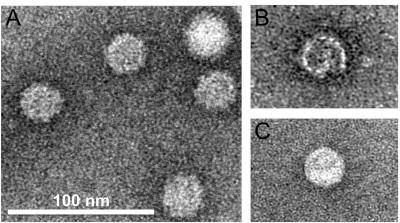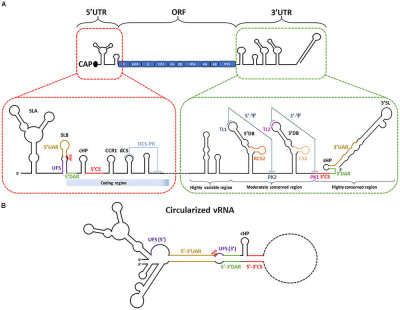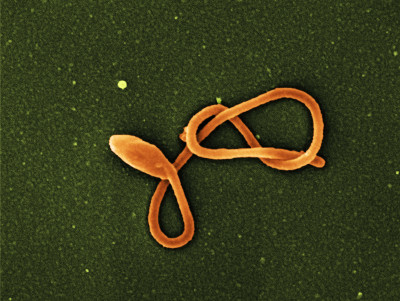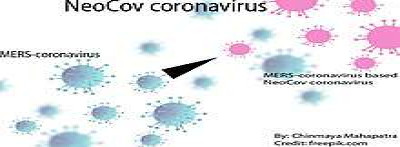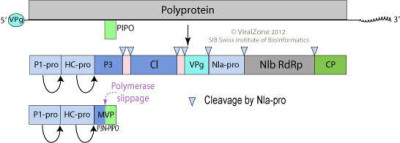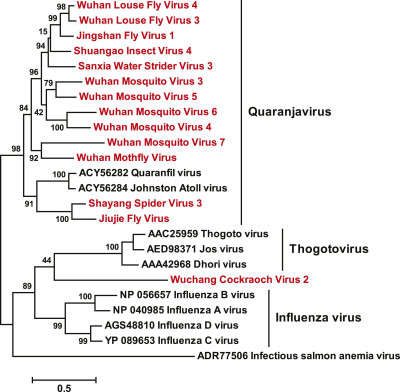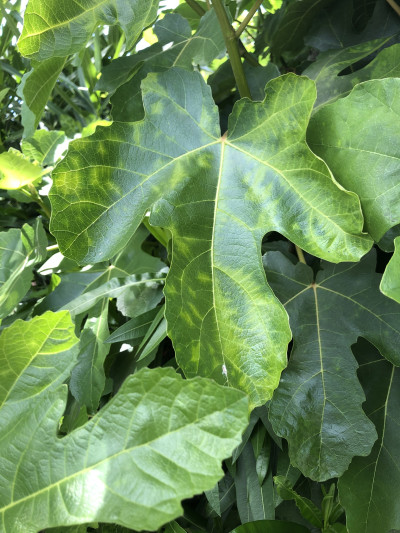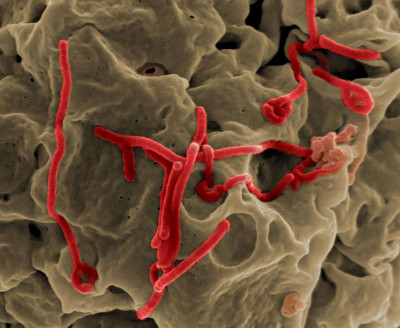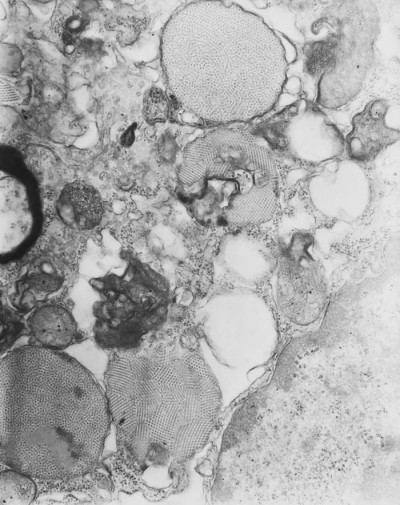Neuraminidase tetramer + 4-4 Fab HC and LC (Mouse) + NAG (= N-acetyl glucosamine, green) + sugars (green) + 4 Ca (red), Influenza A virus.
Astrojan,Wikimedia Commons,Venkatramani, L., Bochkareva, E., Lee, J.T., Gulati, U., Laver, W.G., Bochkarev, A., Air, G.M.
01 Feb 2024
3D print of a coronavirus spike. The spike is a protein on the surface of the coronavirus MERS-CoV that helps the virus enter and infect cells.
Wikimedia Commons, NIAID
02 Feb 2024
Begomoviruses are a genus of plant viruses belonging to the family Geminiviridae. They are characterized by their twinned (geminate) capsid structure, which gives them their name ("geminivirus" meaning "twin virus"). Begomoviruses primarily infect dicotyledonous plants, particularly those belonging to the families Solanaceae and Fabaceae, although they can also affect monocotyledonous plants under certain conditions.
AJC1, Wikimedia Commons
01 Mar 2024
Fold out Illustration of arm with smallpox pustules.
Wikimedia Commons, Wellcome Collection
01 Mar 2024
Microscopy of cells infected with Langat virus. The viral protein NS5 (red) interacts with prolidase (green) to prevent cells from mounting an antiviral response. Blue denotes the cell nucleus, a structure where genetic information is stored.
NIAID, Wikimedia Commons
01 Mar 2024
Available randomised controlled trials (RCTs) suggest that dietary polyunsaturated fatty acids (PUFAs) may not protect against heart disease mortality overall. However, those trials used high doses of dietary PUFAs, which do not likely mimic diet in the general public, and the high doses of dietary PUFAs used in many RCTs might have toxic effects. Some meta-analysis reports showed that increasing dietary intake of PUFAs in RCTs failed to show protection against heart disease mortality. Our results showed that, in people from the general public who did not have a prior diagnosis of myocardial infarction (MI), those with PUFA intake in the highest quartile had a 13% lower heart disease mortality risk compared to those in the lowest quartile. Future RCTs could target those without established coronary heart disease and with low dietary PUFA intake, with the intervention to increase PUFA intake to more modest levels (e.g., 10%-11%, equivalent to the mean level in the highest quartile of our study). PUFAs: polyunsaturated fatty acids [1]
04 Mar 2024
A butterfly rests adjacent to a pupa encased in a cocoon ready to metamorphosize in a remote village of Shringa, Nepal.
08 Mar 2024
Genomic components of Babuvirus. Multipartite ssDNA genome (+) composed of 6 to 8 circular segments about 1kb in size. Each ssDNA segment have a common stem-loop region and are encapsidated in a separate particle. In addition to genomic DNA, up to 4 satellite-like DNAs are found in some isolates, usually encoding for accessory Rep proteins (para-Rep). These satellite-rep proteins are only able to initiate replication of their genomic DNA, unlike genomic encoded Master-Rep (M-Rep) which promotes replication of all 6 viral genomic ssDNAs (trans-replication).
Wikimedia Commons, ViralZone, SIB Swiss Institute of Bioinformatics
11 Mar 2024
Cryo-electron microscopy reconstruction of Semliki Forest virus at 9A resolution. From EMD-1015.
Wikimedia Commons, A2-33
11 Mar 2024
Electron micrographs of negatively stained grouper nervous necrosis virus like particles (VLPs) used for crystallization. (A) T = 3 GNNV-LPs; (B) T = 1 SVPs of the N-ARM deletion mutant; (C) the delta-P-domain mutant. Bar: 100 nm.[1]
Nai-Chi Chen, Masato Yoshimura, Hong-Hsiang Guan, Ting-Yu Wang, Yuko Misumi, Chien-Chih Lin, Phimonphan Chuankhayan, Atsushi Nakagawa, Sunney I. Chan, Tomitake Tsukihara, Tzong-Yueh Chen, Chun-Jung Chen
13 Mar 2024
(A) vRNA is composed of a 5′UTR, one single open reading frame and a 3′UTR. The position of the sequences encoding for the viral proteins within the polyprotein is indicated. The bottom part of the figure shows in details the secondary structures of 5′UTR, capsid-coding region and 3′UTR. The different regions engaged in local pseudoknots and long-range RNA–RNA interactions are indicated and described in detail in the text. (B) Predicted structure of vRNA in its circularized conformation. The coding sequence (except 5′ capsid coding region) is depicted with a dashed line. [1]
Wikimedia Commons, Clément Mazeaud, Wesley Freppel, and Laurent Chatel-Chaix
02 Apr 2024
Colorized scanning electron micrograph of a single filamentous Ebola virus particle (colorized orange). Image captured at the NIAID Integrated Research Facility in Ft. Detrick, Maryland.
Wikimedia Commons, NIAID
03 Apr 2024
This is related to the Middle East respiratory syndrome or MERS-coronavirus. “The virus is discovered in a bat population in South Africa and is currently spreading only among animals," NeoCov is postulated to be more contagious and possibly deadlier strain of coronavirus. But is yet to be found in humans. It has not caused any human deaths as reported till now.
Wikimedia Commons, Chinmayamahapatra
08 Apr 2024
Genome map of the genus Potyvirus.
Wikimedia Commons, ViralZone, SIB Swiss Institute of Bioinformatics
18 Apr 2024
ML phylogeny for the Orthomyxoviridae-like viruses. The phylogeny is reconstructed using RdRp alignments. Statistical support from the approximate likelihood-ratio test (aLRT) is shown on each node of the tree. The names of the viruses discovered in this study are shown in red. The names of reference sequences, which contain both the GenBank accession number and the virus species name, are shown in black. The names of previously defined genera/families are shown to the right of the phylogeny.
Wikimedia Commons, Li C-X, Shi M, Tian J-H, Lin X-D, Kang Y-J, et al
23 Apr 2024
Fig mosaic emaravirus is a plant virus that affects fig trees (Ficus carica) and is responsible for causing mosaic disease in these plants. Belonging to the genus Emaravirus within the family Fimoviridae, it is transmitted by an eriophyid mite vector, Aceria ficus. Infected fig trees typically display symptoms of mosaic patterns on leaves, which appear as irregular patterns of light and dark green patches. These mosaic patterns can vary in severity, and in some cases, infected leaves may also show puckering or distortion.
iNaturalist
11 May 2024
Scanning electron micrograph of Ebola virus budding from the surface of a Vero cell (African green monkey kidney epithelial cell line).
NIAID, Wikimedia Commons
24 Jan 2024
This transmission electron micrograph (TEM) revealed the presence of numbers of Nodamura virus virions. At its core, the Nodamura virus possesses a positive-sense, single-stranded RNA virus ((+) ssRNA) genome. Its outer protein coat, or capsid, is icosahedral (T=3) in shape, which means that its composed of 32 equilateral, triangular facets.
Public Health Image Library
17 Jan 2024
Photograph of symptoms of the blueberry shoestring virus disease.
Mark Longstroth, Wikimedia Commons
31 Jan 2024
Electron micrograph of rotavirus particles reacting with a monoclonal antibody specific for the viral capsid protein Vp6.
Graham Beards, Wikimedia Commons
08 Feb 2024
 Encyclopedia
Encyclopedia
